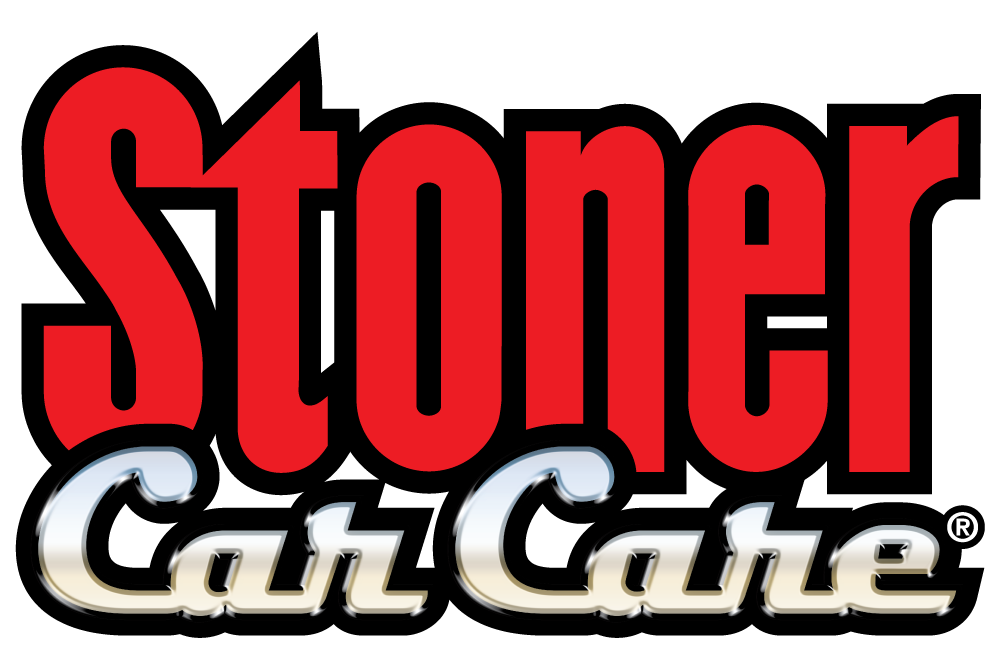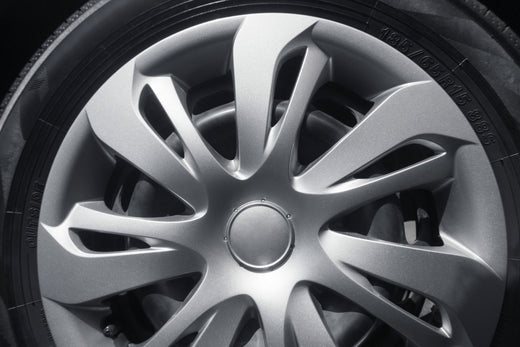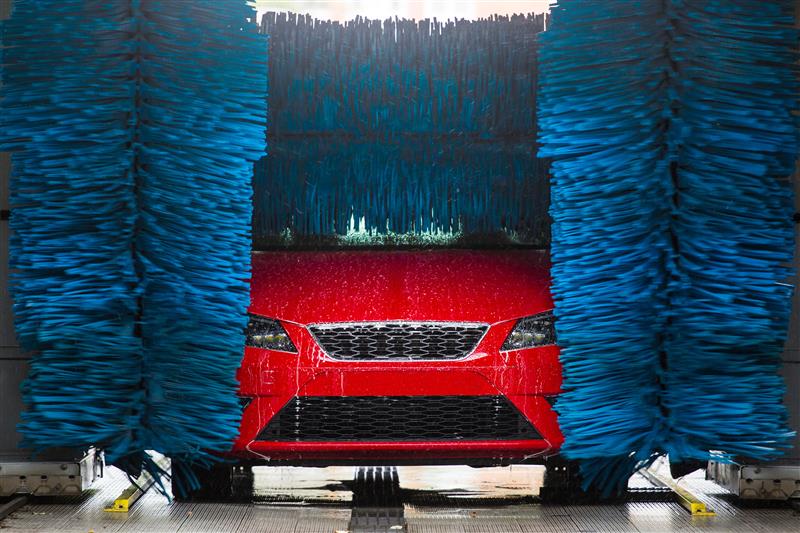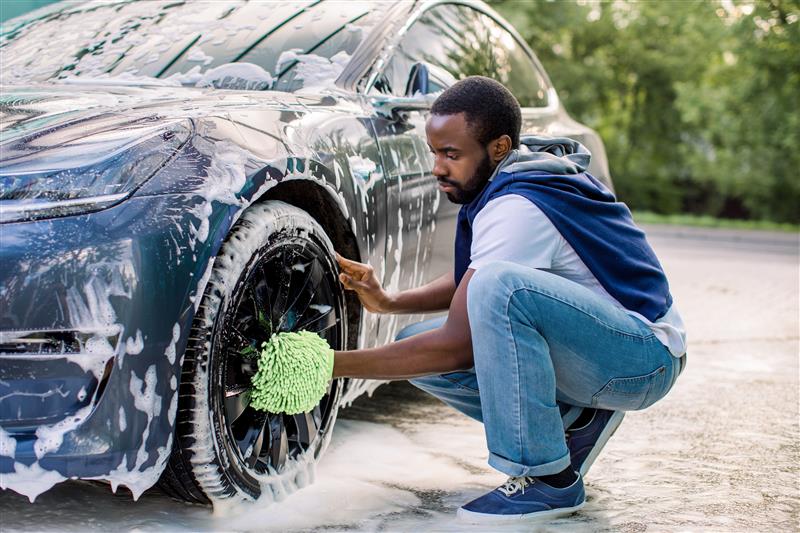Clear vision ahead with our holiday markdowns on Invisible Glass Ceramic Silicone Wiper Blades. Prices as marked.
Hubcaps are decorative disks that cover the hub and rim of a wheel. While they provide style to your wheel, they are magnets for dirt accumulation and moisture. They typically contain multiple nooks and crannies which can be a detailer’s nightmare. Today we’ll share a thorough cleaning routine guaranteed to keep your hubcaps showroom shiny.
To clean your hubcaps: do an initial scrub down, rinse off the tire, detail the hubcap cover, and apply tire dressing.
The materials needed to clean your hubcaps include:
- Soft-bristle brush
- Applicator pad and/or microfiber towel
- Brake dust scrubbing pads
- Tire dressing
- Hose/bucket of water
Before you begin cleaning, allow your wheels to cool completely. Applying a cleaning product to a hot wheel increases the chance of the product drying out and becoming less effective. Parking in a shaded area will speed up your tire cool down process.
Initial Scrub Down
Scrub the wheels with an all-purpose cleaner. This can go a long way in lifting dirt and debris from the tire. Work in this order: clean the hubcap cover first. Next, clean then the hubcap itself. Finally, clean the tire.
Focus your efforts on the hubcap, hubcap cover, and side of the tire
The hubcap cover will typically be made of plastic or light metal materials, which may be susceptible to scratches. Starting with the cover ensures that you aren’t scrubbing with stones or other debris that you’ve trapped in the bristles of the brush. Make sure to thoroughly rinse your brush between surfaces. Stones and debris can also get lodged in the tire treads, so use a brush to clean out the grooves and tread cavities.
The actual hubcap will be the trickiest spot to clean because it’s behind a cover that contains holes and crannies that love to catch dirt. Removing the hubcap cover will give you more room to work; however, this can be a tricky process for inexperienced detailers. If you wish to learn more, consult your owner’s manual or a local mechanic for proper methods to safely remove these covers. Improper technique may result in damaged or broken covers.
Rinse off the Tire
After scrubbing, rinse the tires with water to remove leftover residue. A thorough rinse will remove most dirt, grime, and brake dust residue. You may need to repeat the initial scrub down to remove baked-on debris from the tire.
Hoses are great tools for removing debris, residual cleaning agents, and tire dressings. Standard fittings and nozzle attachments offer multiple spraying options to help you reach all areas of the tire. If you don’t have access to a hose, a bucket filled with water will suffice.
Detail the Hubcap Cover
The hubcap cover is the centerpiece of your wheel, so give it the time and care it deserves by detailing it. A soft-bristle brush is helpful for cleaning hubcap covers but be mindful of hard bristles. Wired or hard bristles may scratch, or damage hubcap covers made of plastics or lightweight metals.
Hubcap covers will often have central caps that attach the cover onto the wheel. The bolt cavities are the areas most prone to collecting road grime and brake dust build up. Although brushes can reach these areas, it’s unlikely they can fully clean deep crevices. Instead, use the corner of a microfiber towel or a brake dust scrubbing pad to reach into the bolt cavities for a thorough, deep clean.
Brake dust scrubbing pads are perfect for removing dirt and dust. Regardless of whether you use a wheel, rim, or hubcap, you’ll commonly find brake dust building up over time. This is a result of normal use, and there’s no way to prevent it – apart from weekly cleanings. Routine removal of brake dust residue is crucial, not just from an appearance perspective, but from a mechanical one as well.
Brake dust is a light powder that falls onto your vehicle’s brake calipers and rotors as you use your brakes. Over time, brake dust causes friction between the pad and rotor, which results in excessive wear to your brake pad. Routine wheel cleaning can go a long way in prolonging the lifespan of both your brakes and wheels.
Spray Tire Dressing
A quick application of tire dressing can make any wheel look brand new in a matter of minutes. While tire dressing provides the appearance of cleaner tires, it also prolongs the longevity of your tires. Most tire dressings can prevent the natural cracking, fading, and hardening of your tires over time.
There are two varieties of tire dressing: Water-based and solvent-based silicone dressings. Water-based dressings are comprised of naturally occurring oils and synthetic polymers, which are non-greasy and result in a satin-like finish. You may find UVR blocking agents in some water-based dressings that can prevent cracking or fading over time.
In contrast, solvent-based dressings provide more of a glossy finish to your tire’s surface. Tire dressings can come in a spray or gel form, leaving you with multiple options from which to choose.
Regardless of which type of dressing you choose; be conservative with the amount of product you use on the tires. Too much dressing on the tire will oversaturate it and prevent it from drying completely. Driving with excess tire dressing can lead to slinging and splattering along the side of the car and wheel well. To prevent slinging, carefully spray the side of the tires, covering the entire wheel with a light layer. During this process, you may wish to move your car slightly forward to gain access to all angles of your tires. Do not spray the tread of the tire, which can make it slippery – creating a safety hazard.
Wrapping it Up
There are several steps and considerations to make when detailing your hubcap, but don’t let that discourage you. Take care of one of the most important parts of your vehicle with a little elbow grease, a few tools, and these simple steps: do an initial scrub down, rinse off the tire, detail the hubcap cover, and apply tire dressing. Prolong the lifespan of your tires with this in-depth cleaning routine.



